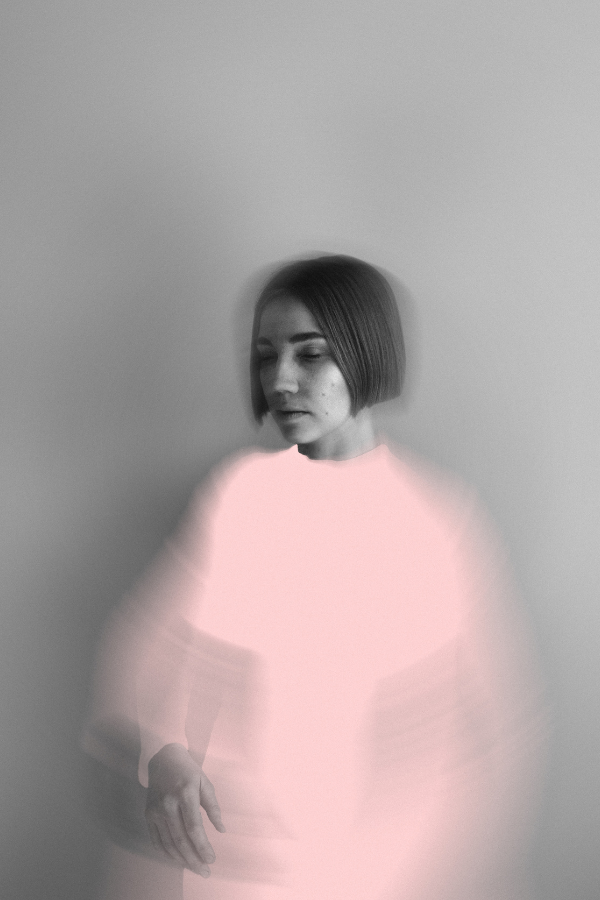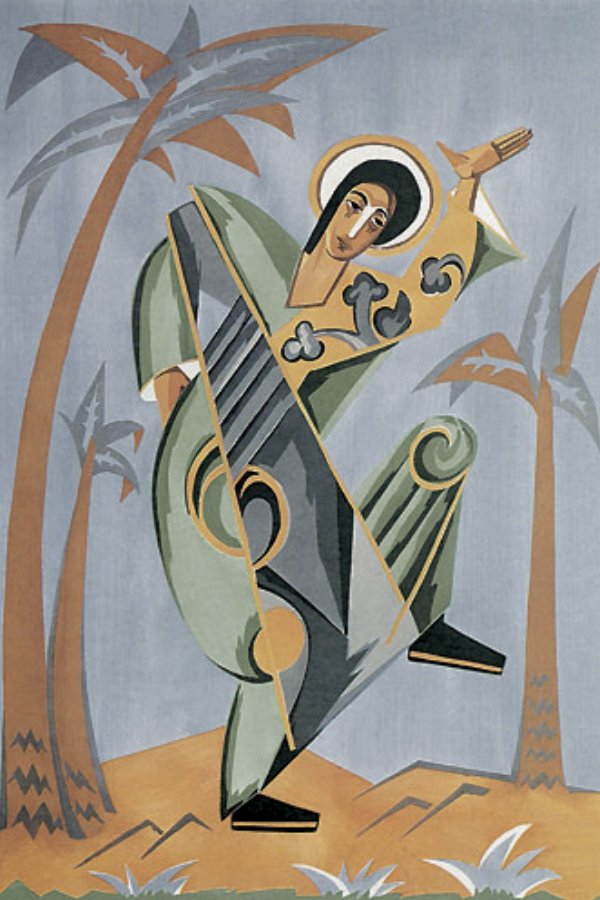

Honoring Female Artists: Natalia Goncharova and Russia’s Rayonism
Summary
Natalia Goncharova was born in Nagaevo, Russia in 1881 after which she moved to Moscow at the age of 10 and graduated from the Fourth Women’s Gymnasium in 1898. Goncharova was the great-granddaughter of the poet Alexander Pushkin. She pursued various career paths before deciding on sculpture, studying at the Moscow Institute of Painting, Sculpture, and Architecture under Pavel Trubetskoy. Goncharova met Mikhail Larionov at the Institute, and they soon began sharing a studio and living space. She became a founding member of the avant-garde groups Jack of Diamonds and Donkey’s Tail, contributing significantly to Russian Futurism and Rayonism.
Reflection Questions
- How does Goncharova’s journey inspire your own creative pursuits or career ambitions?
- In what ways do you see contemporary art being influenced by pioneers like Goncharova?
- How can we continue to uncover and celebrate the stories of women who have been overlooked in the history of art?
Journal Prompt
Reflect on your personal journey and the obstacles you’ve faced in pursuing your passions or career, especially in fields traditionally dominated by men. Consider how the story of Natalia Goncharova, her challenges, and her innovations in the art world might mirror or contrast with your experiences. What does Goncharova’s legacy teach you about resilience, creativity, and breaking barriers? How can her story influence the way you navigate your own path?
Natalia Goncharova was a trailblazer of the abstract art movement in Eastern Europe. She was one of the first Russian artists to experiment with Cubism and Futurism. At DesignDash, we often focus on incredible female artists who made waves in their discipline. Honoring pioneering women in art history is crucial for acknowledging their invaluable contributions and breaking the traditional barriers they faced. These women, like Natalia Goncharova, challenged societal norms and paved the way for future generations in the art world. Recognizing their achievements not only enriches our understanding of art history but also inspires ongoing conversations about equality and diversity in the arts. Their legacy is a testament to the enduring power of creativity and innovation, regardless of gender. Let’s explore Goncharova’s contributions to the Russian avant garde!
Exploring Her Young Life and Early Career


Natalia Goncharova, born in 1881 in Nagaevo, Russia, was significantly influenced by her early environment and family’s liberal views. Her heritage, deeply rooted in Russian culture and history, played a crucial role in shaping her artistic journey. Her upbringing in a family with a strong appreciation for the arts set the stage for her future explorations in avant-garde movements.
Goncharova’s formal education at the Moscow Institute of Painting, Sculpture, and Architecture marked the beginning of her artistic career. Studying under Pavel Trubetskoy, the Russian artist initially focused on sculpture before expanding into painting. Her early works, characterized by a blend of traditional ethnic Russian folk art and emerging modernist trends, laid the groundwork for her involvement in avant-garde art movements.
Meeting Mikhail Larionov


Natalia Goncharova and Mikhail Larionov met while both were students at the Moscow Institute of Painting, Sculpture and Architecture. Their relationship quickly evolved from classmates to collaborators and lifelong partners, both personally and professionally. They eventually shared a studio and living space in which they developed ideas that would upend Russian art.
Together, they were central figures in the Russian abstract art movement, co-founding Rayonism and creating a radical independent exhibiting group that broke away from European art influence. Their partnership was both a romantic and a creative union that significantly influenced the direction of modern art in Russia.
The Birth of Rayonism in Russian Art
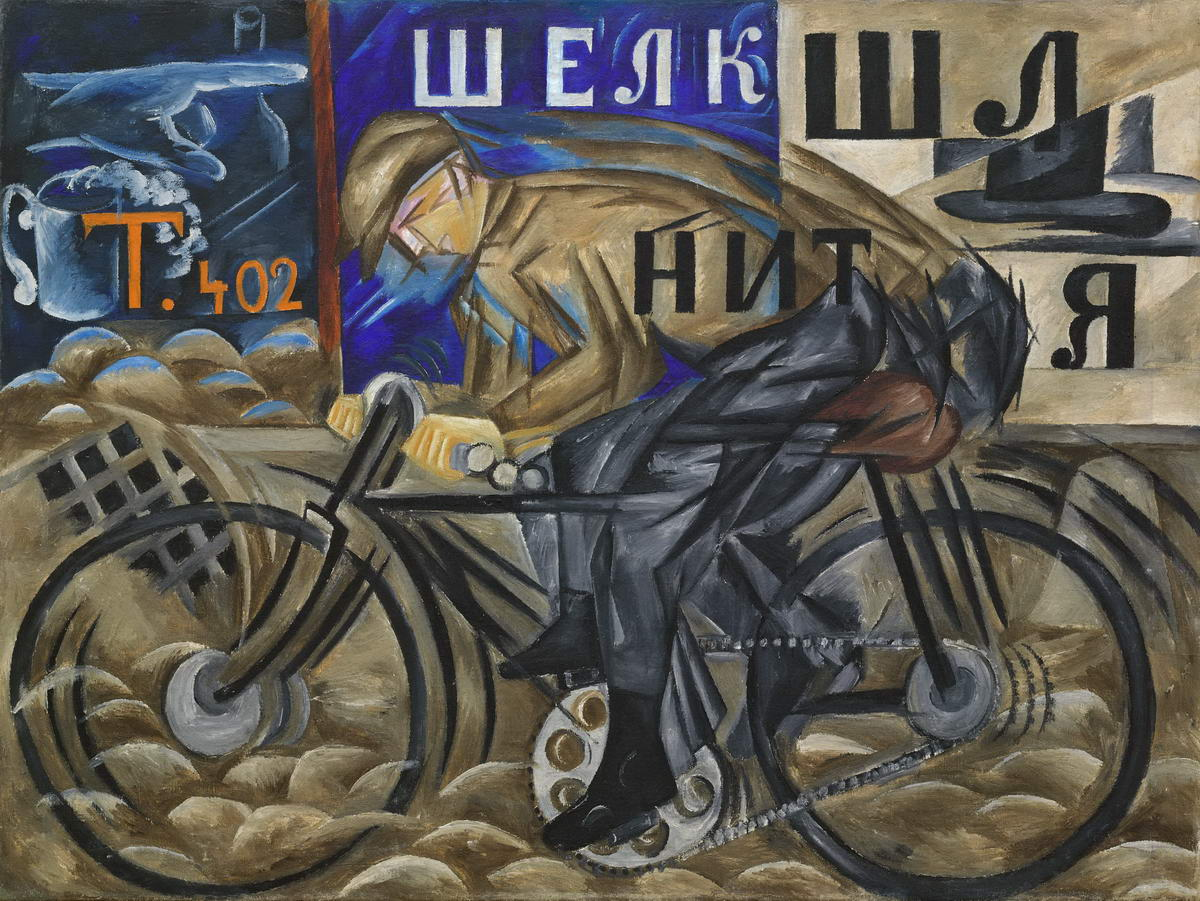

Natalia Goncharova and Mikhail Larionov brought Rayonism to life in 1911, inspired by the dynamics of modern life and the energy of urban environments. It was later officially introduced in 1913. They sought to depart from traditional representational art, aspiring instead to capture the intersection of light and form through abstract compositions. This innovative approach marked a significant departure from both Russian and European art traditions of the time, positioning Rayonism at the forefront of the avant-garde movement.
Key Principles of Rayonism
Rayonism was characterized by its emphasis on the visualization of light rays’ interaction with objects, translating these interactions into vibrant, dynamic compositions. Goncharova and Larionov focused on breaking down objects into a series of intersecting light rays, aiming to capture the essence of movement and the fluidity of perception. This focus on light rather than form was radical, suggesting a more immersive and abstract way of seeing the world, which was instrumental in the development of abstract art.
The Donkey’s Tail Exhibition
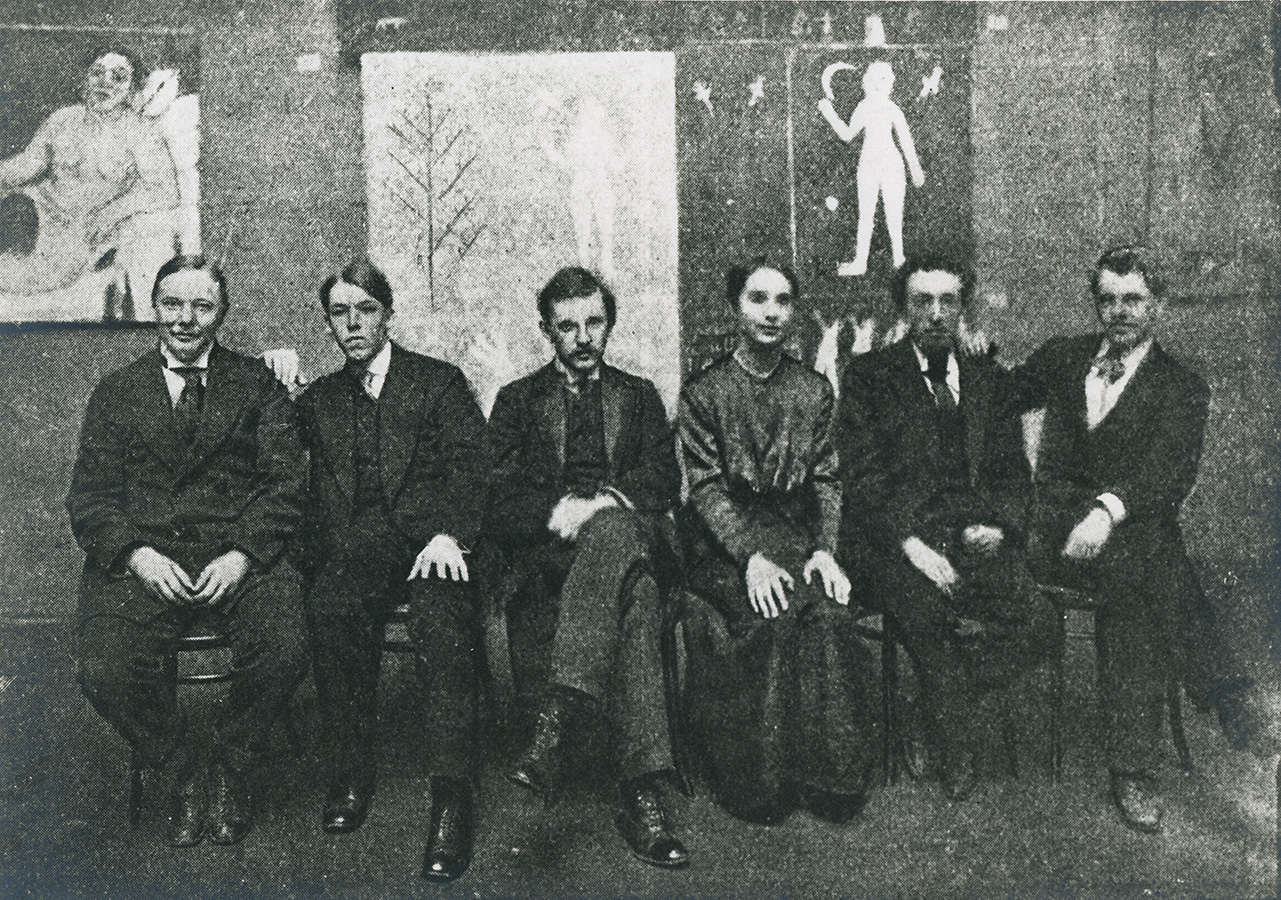

The Donkey’s Tail exhibition, organized by Goncharova and Larionov (though primarily by the latter), was a significant event in the Russian avant-garde, intentionally distancing itself from European art influences and aiming to establish an independent Russian modern art identity. It sparked controversy due to its provocative title and the unconventional presentation of religious themes, which was seen as transgressive. This exhibition played a pivotal role in challenging traditional artistic norms and emphasized the emerging modernist movement’s desire to create a distinctly Russian form of avant-garde art.
Goncharova’s Rayonist Period
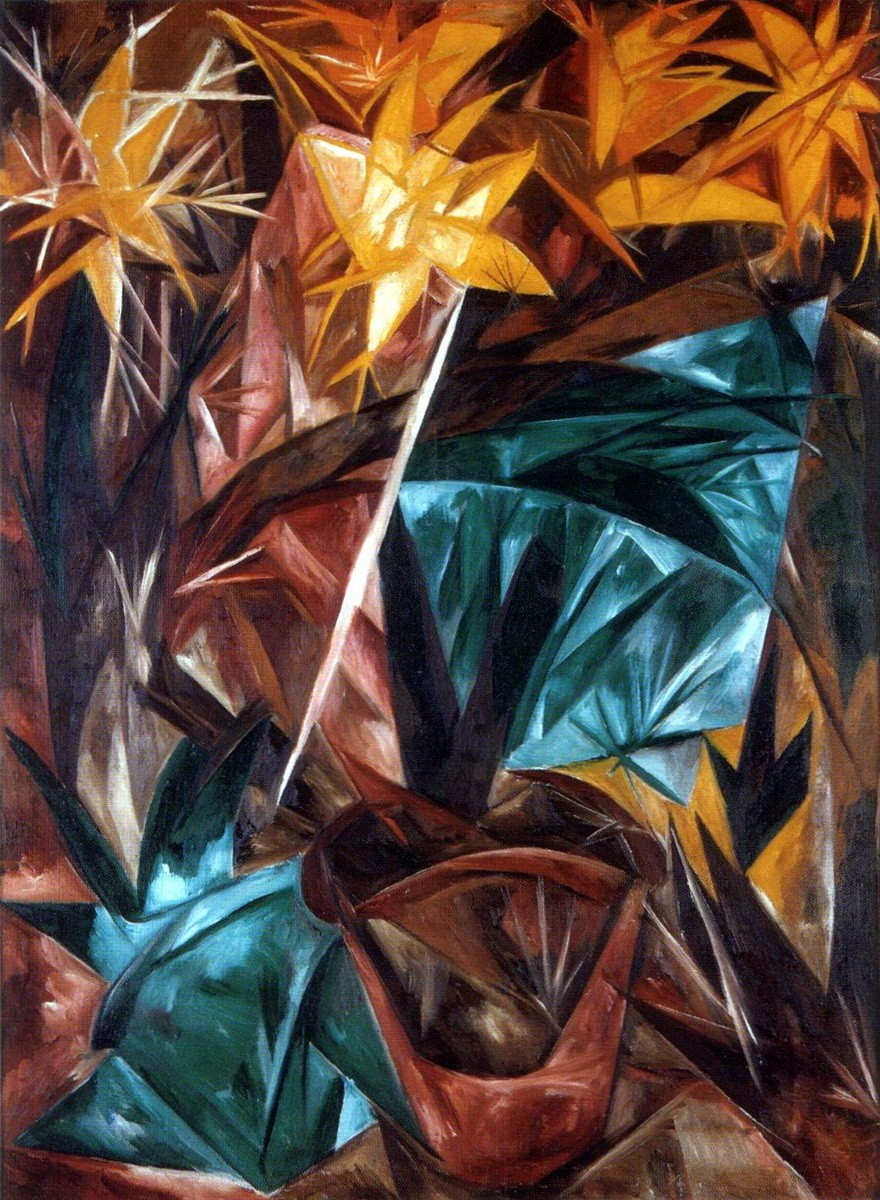

During Goncharova’s Rayonist period, she embraced a unique style that broke down objects into dynamic interplays of light and color, aiming to capture the energy and movement of the modern world. This approach allowed her to explore the abstraction of forms through the lens of rays, differing significantly from the traditional depiction of subjects.
Her significant Rayonist works, such as “Rayonist Lilies” and “Green and Yellow Forest,” made a profound impact on the art world, showcasing a novel method of visual expression and influencing future avant-garde movements. These pieces are celebrated for their innovative use of color and form, contributing to the development of abstract art.
Critical Reception of Rayonism and Its Break from European Modernism
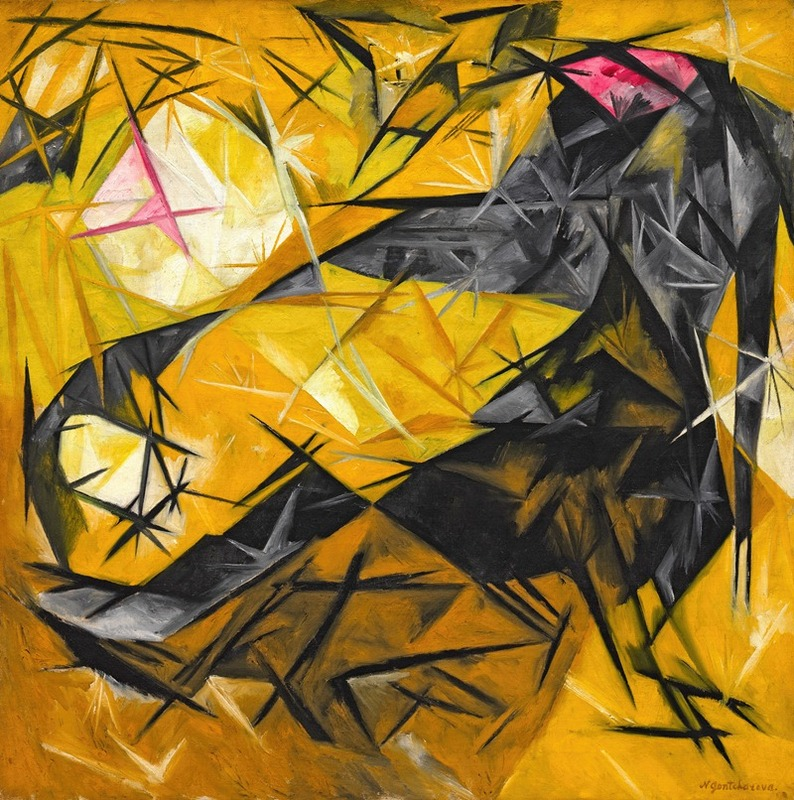

Rayonism received mixed reactions during its inception. Critics were divided; some hailed it as a revolutionary approach to visual expression, while others dismissed it as too abstract and disconnected from reality.
This avant-garde movement, emphasizing dynamic light rays and the decomposition of objects into pure color, challenged traditional artistic norms and provoked discussions on the essence and future of art. The controversy extended beyond Rayonism, touching on Goncharova’s broader avant-garde works, which often pushed the boundaries of acceptable art during her time, blending modernist ideas with traditional Russian elements in ways that were both innovative and, to some, irreverent.
Final Thoughts on Natalia Goncharova and the Independent Russian School of Rayonism
Natalia Goncharova played a pivotal role in the development of Rayonism, marking a significant chapter in avant-garde art movements by introducing an innovative way to depict light and form. Her work not only challenged conventional perceptions of art but also laid the groundwork for future explorations into abstraction. Today, Goncharova’s legacy endures, with Rayonism continuing to influence contemporary artists and scholars, attesting to the timeless relevance of her contributions to the art world.



